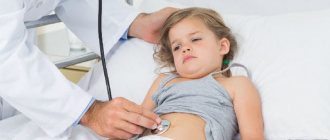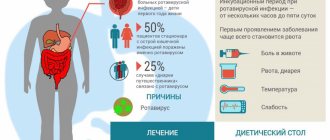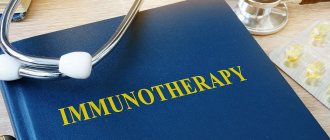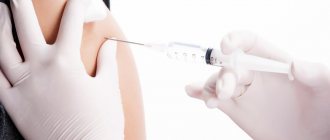Infectious disease specialist
Sinitsyn
Olga Valentinovna
34 years of experience
Highest qualification category of infectious disease doctor
Make an appointment
Rotavirus infection is a disease of viral origin that has an oral-fecal transmission mechanism. The peculiarity of the pathology is a combination of symptoms of damage to the digestive system with respiratory signs at the acute stage of the disease. The disease can be diagnosed in patients of any age, but more often in children under 2 years of age, in whom rotavirus accounts for up to 50% of all reported cases of intestinal infections.
Causes
The causative agent of rotavirus infection in children and adults is rotavirus, which has the ability to survive even when treated with potent disinfectant solutions. In the feces of a sick person, its vital activity persists for 7 months, in environmental conditions - for more than a month. The infection is transmitted from a carrier or a sick person through the fecal-oral route through water, food and household items, especially when the sanitary and hygienic condition of the premises is unsatisfactory.
Patients at risk for rotavirus include:
- childhood;
- with disturbances in the functioning of the immune system, when it is suppressed;
- with chronic intestinal diseases;
- with violations in the diet, as well as when changing baby food;
- working or visiting large groups;
- not observing the rules of personal hygiene.
The causative agent of rotavirus infection and mechanisms of infection
The causative agent of intestinal flu is rotavirus (from Latin rota - wheel), a virus from the Reoviridae family. The virus owes its name to its shape - it looks like a wheel with short spokes and a thick rim. Rotavirus is resistant to low and high temperatures, ultrasound, and does not die in chlorine and formaldehyde.
The most common mechanism of spread of rotavirus infection is fecal-oral. The virus enters the body from contaminated objects and dirty skin of the hands - which is why the key measure to prevent rotavirus infection is personal hygiene.
The disease is also spread by airborne droplets (by contact with a sick person) and nutritional routes (by eating poorly washed foods and contaminated water).
Symptoms
The disease has a cyclical development: the incubation period lasts up to 5 days, the acute period lasts 7 days, recovery occurs after another 3-5 days. The main signs of rotavirus infection include:
- sudden onset of symptoms of poisoning simultaneously with symptoms of intestinal infection;
- profuse vomiting and nausea that disappear within 24 hours from the onset of the disease;
- diarrhea with pain in the middle and upper abdomen, with the release of watery and foamy stool of a yellow-green hue;
- rumbling and transfusion in the abdomen;
- signs of general intoxication - headache, fever, feeling of weakness;
- characteristic respiratory symptoms - runny nose, swelling and redness of the throat;
- signs of dehydration caused by diarrhea and excessive vomiting.
Are you experiencing symptoms of rotavirus infection?
Only a doctor can accurately diagnose the disease. Don't delay your consultation - call
Preventive measures
Prevention of rotavirus consists of strengthening the immune system and observing hygiene rules. Regarding infants, this also includes breastfeeding. In addition, there is a vaccination against rotavirus infection.
How does vaccination help?
Vaccination against rotavirus is already included in the National Vaccination Calendar of the USA, Germany, France and some other countries. In Russia this is just being planned, so for now it can be done on a paid basis; Only the wishes of the parents are enough. And here it is important not to miss deadlines - now we will explain why.
There are 2 vaccines against rotavirus: Rotarix (monovalent) and RotaTek (pentavalent). The RotaTek vaccine is available in our country (Manufacturer: Merck Sharp and Dome B.V., the Netherlands). It helps fight rotaviruses of serotypes G1, G2, G3, G4 and serotypes G containing P1A[8] (for example, G9). The vaccine is a drinking solution (not an injection).
According to the instructions, the vaccination course consists of three doses with an interval between doses of 4 to 10 weeks. And now, as promised, we pay attention to the deadlines. The first vaccination is given no later than 12 weeks from birth! That is, active immunization of children is carried out between the ages of 6 and 32 weeks.
Why can't you vaccinate after 32 weeks?
As mentioned above, the instructions stipulate that the course of vaccination should be completed at 32 weeks, and the child should receive the first dose no later than 12 weeks of age. The effect of the vaccine at later stages of the course of vaccinations has not been studied, and in the absence of data on effectiveness and safety, the drug cannot be used.
Another common question is why a vaccine is not developed to vaccinate older children or adults. Perhaps such a vaccine will also appear someday, but for now it is only possible to vaccinate children. Yes, it is understandable that the vaccine was primarily developed for those who suffer this infection the hardest: children in the first years of life. A child's weak immune and digestive system cannot cope with intoxication, which leads to a severe course of the disease and complications. 3 doses of the vaccine are the conditional 3 first “meetings” with the virus. If the virus is real, i.e. wild - the consequences of such contacts are unpredictable, but if it is vaccine - it is transferred almost unnoticed. As a result of the vaccine, the child acquires immunity. It is valid for up to 5 years, that is, precisely the period when rotavirus is especially dangerous for humans.
About rotavirus infection, as well as about other vaccinations that are not included in the National Calendar of the Russian Federation, see our video (narrated by allergist-immunologist Natalya Nikolaevna Nagornaya):
For all questions related to rotavirus and vaccination, you can contact the specialists of our center. Sign up for vaccination now.
Diagnostics
The results of the following studies help a pediatrician or therapist make an accurate diagnosis:
- a blood test showing an increase in the level of leukocytes;
- stool analysis, where there is an increase in leukocytes, starch grains, as well as undigested muscle fibers;
- serological blood test;
- positive results of infection of cell cultures with viral particles of the patient’s stool;
- PCR method that examines blood and stool samples.
Differential diagnosis is carried out to exclude a bacterial infection; the viral nature of the disease is confirmed by positive results of serological examination and bacterial culture.
Sources
1. Efficacy of probiotic use in acute rotavirus diarrhea in children: A systematic review and meta-analysis Elaheh Ahmadi, MSc, Reza Alizadeh-Navaei, MD, PhD, and Mohammad Sadegh Rezai, MD, PMC - [https://www. ncbi.nlm.nih.gov/pmc/articles/PMC4649266/] (https://www.ncbi.nlm.nih.gov/pmc/articles/PMC4649266/) 2. Global, Regional, and National Estimates of Rotavirus Mortality in Children <5 Years of Age, 2000-2013. Tate JE, Burton AH, Boschi-Pinto Parashar; World Health Organization–Coordinated Global Rotavirus Surveillance Network, PubMed - [https://www.ncbi.nlm.nih.gov/pubmed/27059362] (https://www.ncbi.nlm.nih.gov/pubmed/27059362) 3. Rotavirus Vaccine, Family Practice - [https://www.fpnotebook.com/ID/Immunize/RtvrsVcn.htm] (https://www.fpnotebook.com/ID/Immunize/RtvrsVcn.htm) 4. Rotavirus. Vaccination, CDC - [https://www.cdc.gov/rotavirus/vaccination.html] (https://www.cdc.gov/rotavirus/vaccination.html) 5. Risk Factors Associated With Rotavirus Gastroenteritis During a Community Outbreak in Chiapas, Mexico During the Postvaccination Era, Journal of Pediatric Infectious Diseases - 7. Risk Factors for Severe Rotavirus Gastroenteritis Huppertz, Hans-Iko MD; Salman, Nuran MD; Giaquinto, Carlo MD, Journal of Pediatric Infectious Diseases -[https://journals.lww.com/pidj/Fulltext/2008/01001/Risk_Factors_for_Severe_Rotavirus_Gastroenteritis.3.aspx] (https://journals.lww.com/pidj/Fulltext /2008/01001/Risk_Factors_for_Severe_Rotavirus_Gastroenteritis.3.aspx) 8. Rotavirus. Symptoms, CDC -[https://www.cdc.gov/rotavirus/about/symptoms.html] (https://www.cdc.gov/rotavirus/about/symptoms.html) 9. Rotavirus. Overview, Mayo Clinic -[https://www.mayoclinic.org/diseases-conditions/rotavirus/symptoms-causes/dxc-20186931](https://www.mayoclinic.org/diseases-conditions/rotavirus/symptoms-causes /dxc-20186931) 10. Modern manifestations of the epidemic process of rotavirus infection and ways to optimize epidemiological surveillance, Vitaly Vyacheslavovich Kudryavtsev - [https://www.crie.ru/pdf/disser1(kudryavtsev).pdf] (https://www. crie.ru/pdf/disser1(kudryavtsev).pdf) 11. Diarrhoea and Vomiting Caused by Gastroenteritis: Diagnosis, Assessment and Management in Children Younger than 5 Years, NCBI - [https://www.ncbi.nlm.nih.gov /books/NBK63845/] (https://www.ncbi.nlm.nih.gov/books/NBK63845/)
Treatment
Currently, specific treatment regimens for rotavirus infection have not been developed. With a mild course of the disease, the symptoms go away on their own. Patients are advised to diet and take medications to restore fermentation in the digestive system. Enterosorbents that mitigate the symptoms of diarrhea and vomiting can help cope with the symptoms of a viral infection. If the patient is dehydrated, rehydration therapy with the use or intravenous administration of saline solutions is indicated.
An unpleasant surprise - rotavirus during trips and travels
Many stories have been told on the Internet about how rotavirus ruined a vacation while traveling abroad. This usually happens with small children, but cases are not excluded when the whole family spends several days, what is popularly called, “embracing the toilet.” One of these cases, although it ended happily, was not pleasant enough. Thailand. Vacation. Heat. A family with a 9-month-old child is admitted to the hospital. Diagnosis: rotavirus infection. It was not possible to combat dehydration with improvised means; it is difficult to explain to a child at this age that he needs to drink a lot. Therefore, for 3 days of vacation, instead of swimming in the sea and riding elephants, there were IVs and other treatment. It’s good that insurance was taken out that covered this “entertainment”, because the bill that was presented to the insurance company was about 100 thousand rubles.
Questions and answers
How is rotavirus infection transmitted?
The mechanism of transmission of the virus is fecal-oral, where the causative agent of the disease enters the environment along with the feces of the carrier or patient, and then on dirty hands into the body of a healthy person. Household items, food, dirty water - all this can become a source of infection.
What can you eat if you have rotavirus infection?
Recommendations for a patient with rotavirus infection include dietary table No. 46 with restrictions on the amount of carbohydrates and dairy dishes, as well as an increase in the amount of protein foods. This diet plan is aimed at restoring the body’s immune system and stabilizing the digestive system that has been hit by the virus.
How long does rotavirus infection last?
The duration of the disease depends on the state of health of the person and his immune system. It may take 10-15 days from the moment of infection to complete recovery, where the first 6-7 days are an acute period with a whole bunch of unpleasant symptoms. The incubation period lasts from several hours to five days, after which the infection immediately makes itself felt with a sharp deterioration in the patient’s condition.
How long does the virus live
The pathogen has a fairly high viability - on various surfaces, depending on environmental conditions, it can retain its properties for up to a month, and in feces for up to six months. The virus is resistant to factors such as:
- high temperature (up to 60-70˚С);
- low temperature (withstands even freezing);
- ultrasonic influence;
- UV irradiation;
- antibacterial agents;
- fat solvents;
- chloroform and ether.
Rotavirus can be killed by boiling, treating with strong alkaline solutions or acids. The pathogen has increased sensitivity to ethanol (96˚), formaldehyde, and hydrogen peroxide.







